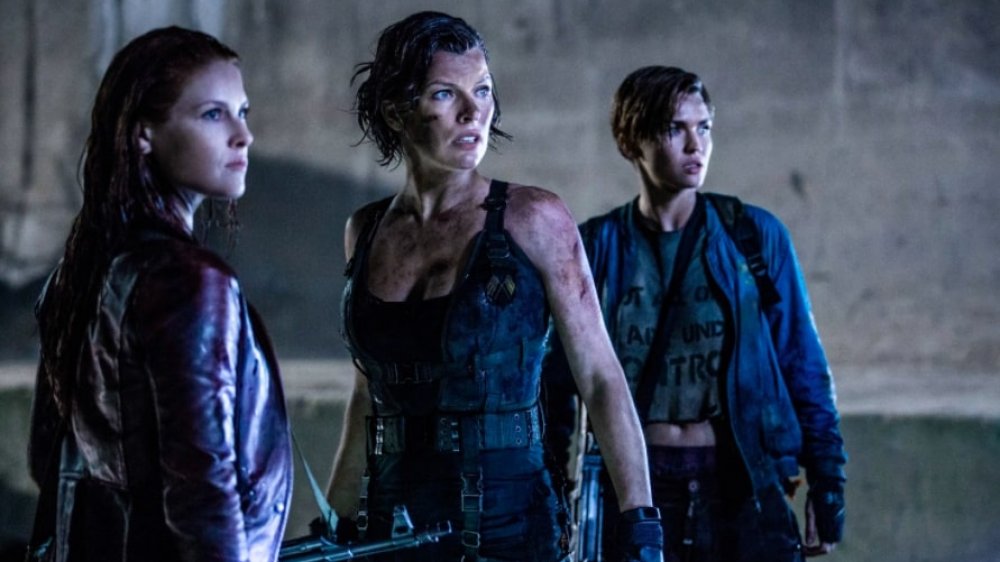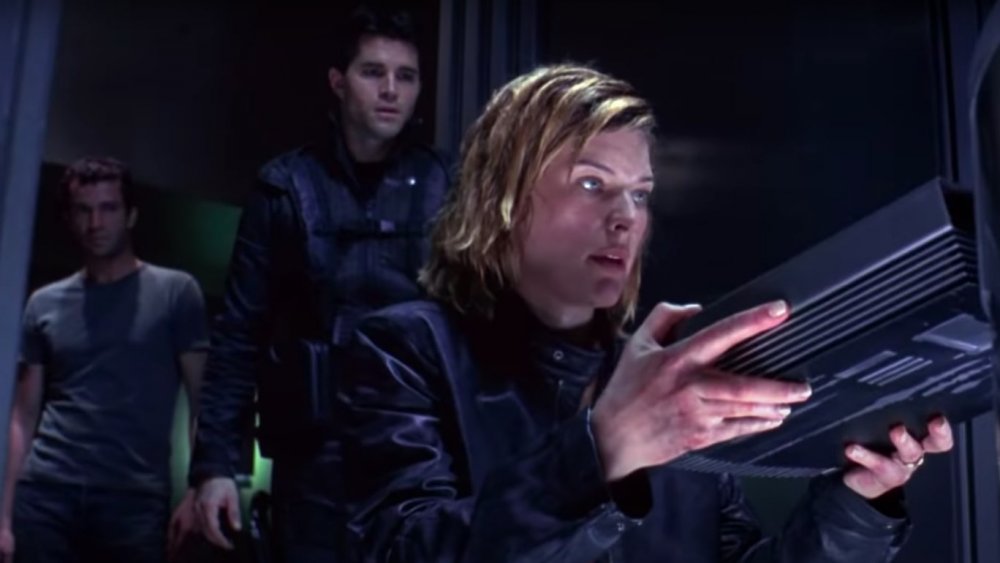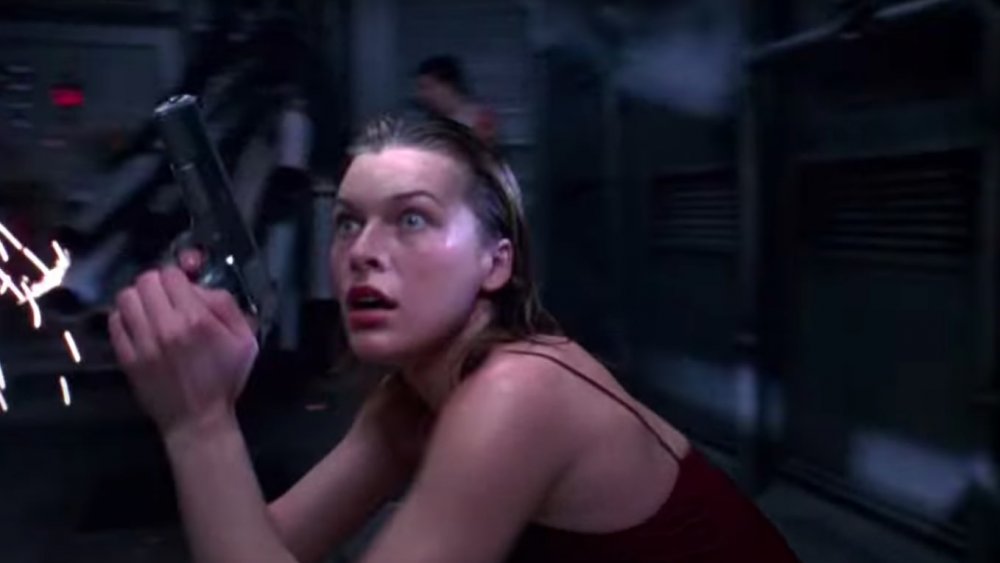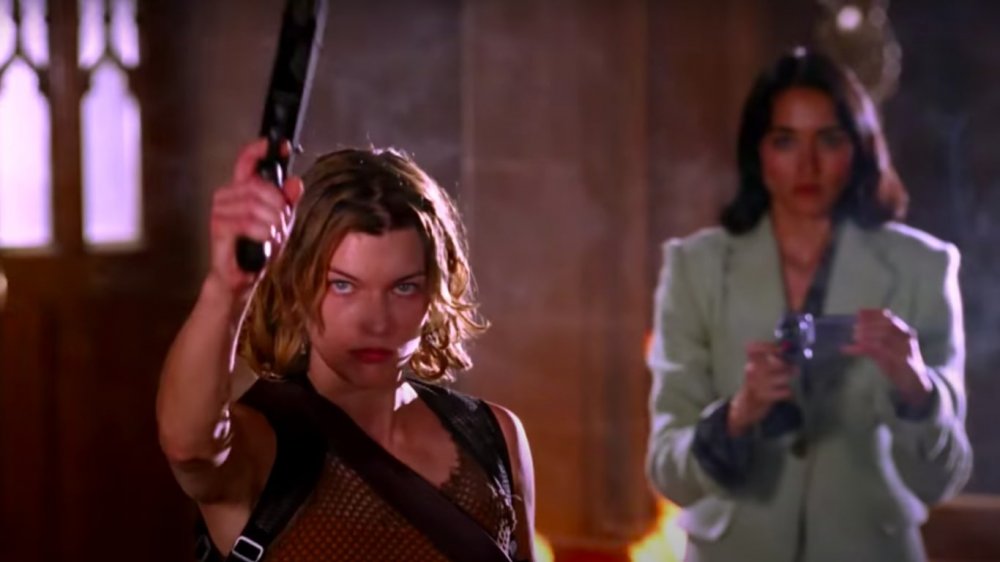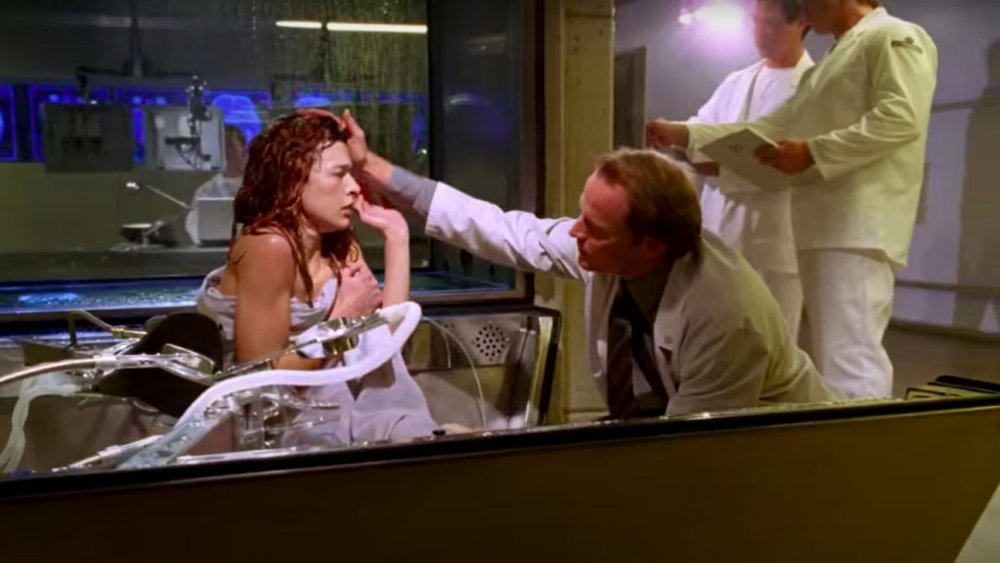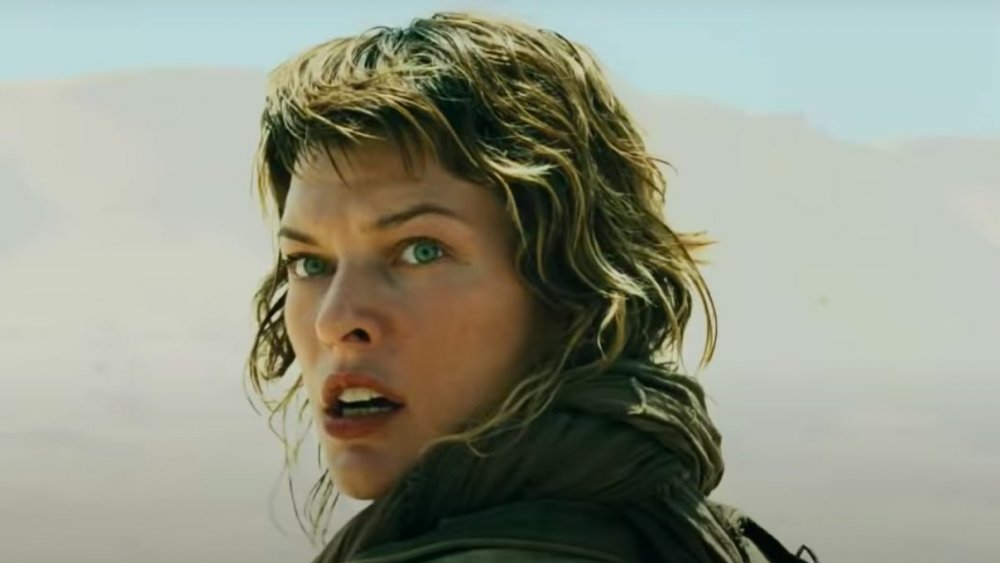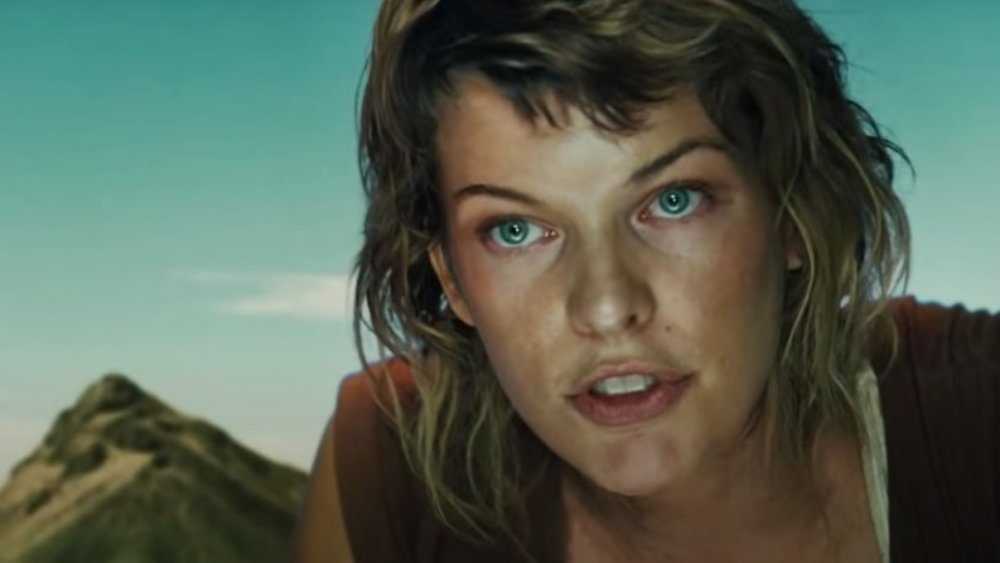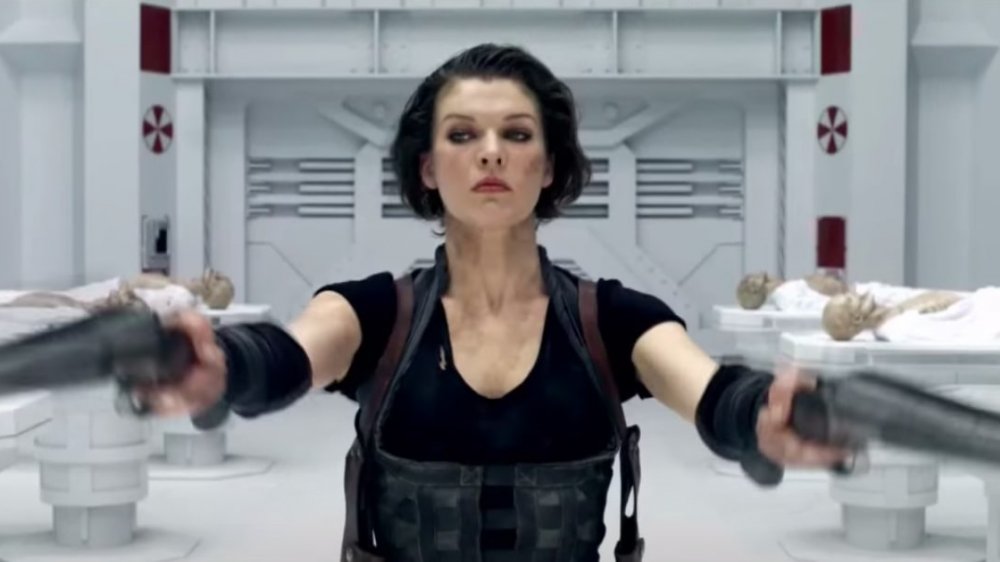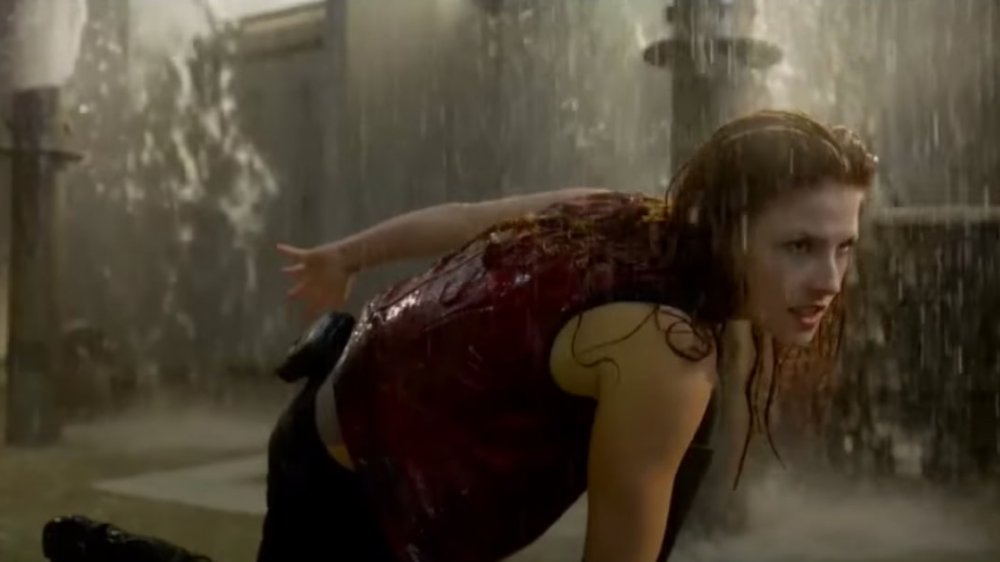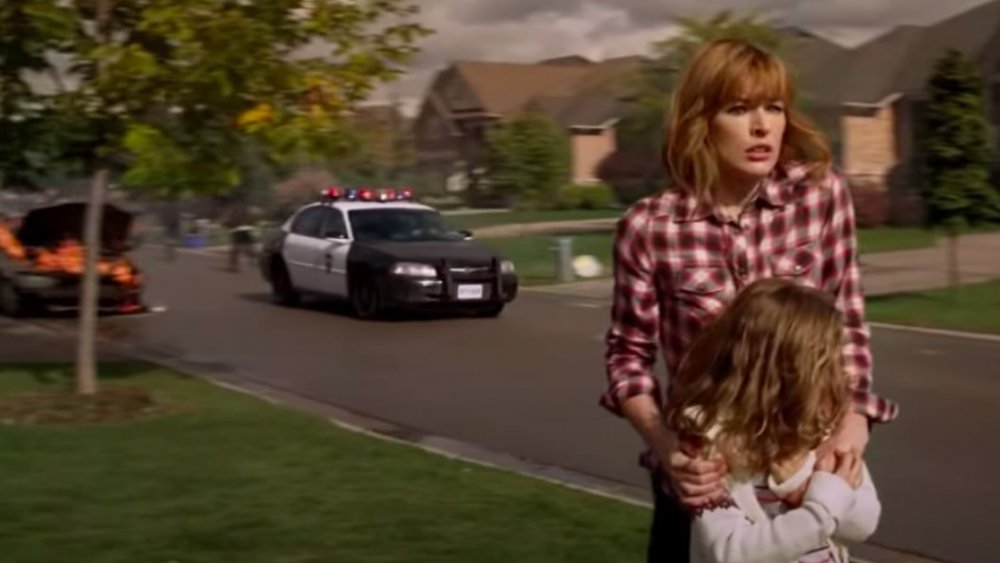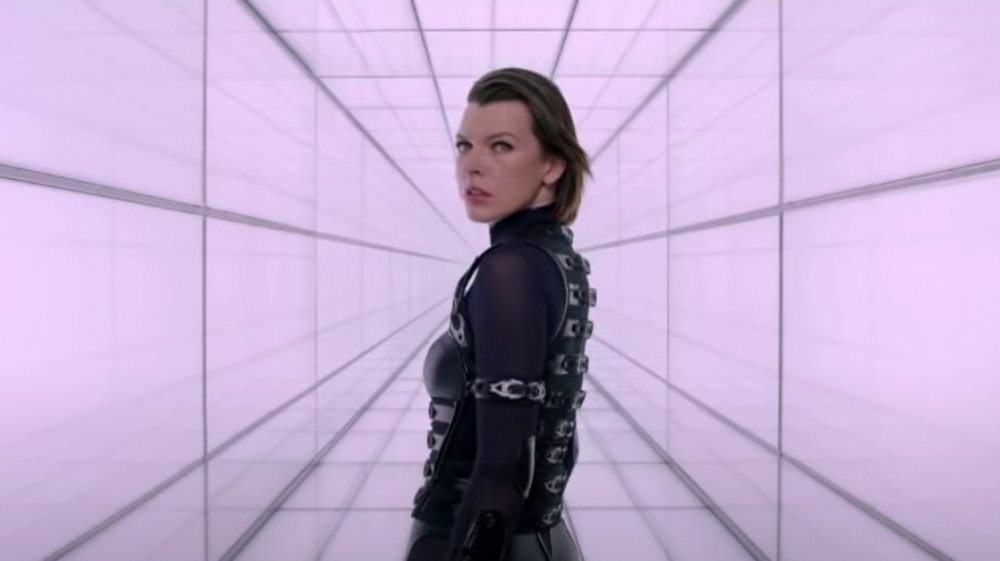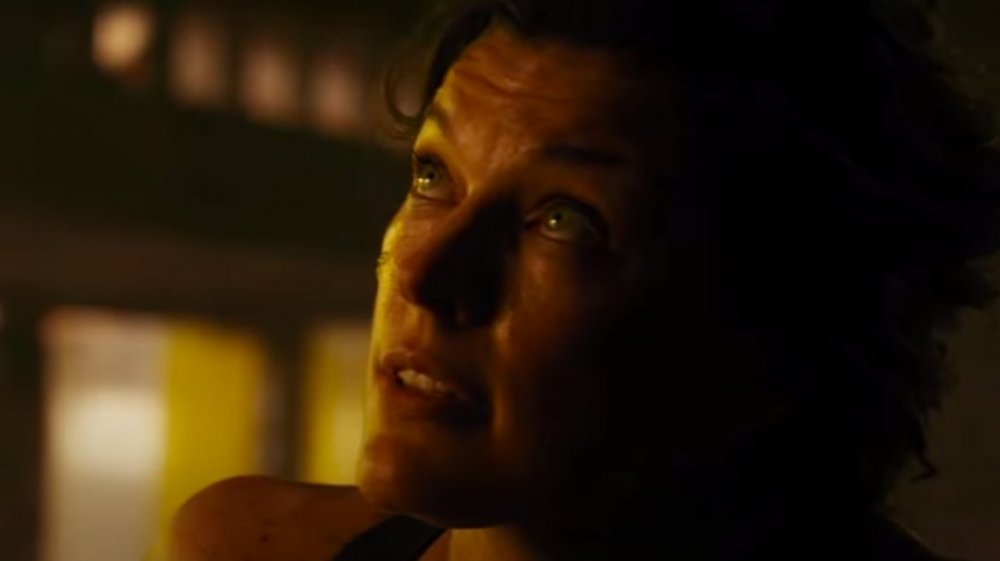The Entire Resident Evil Timeline Explained
Few movies based on video games have managed to spawn successful franchises, but Resident Evil has proven to be an exception to this rule. These action-packed zombie movies have captivated fans since 2002, and while all of the pieces of the plot don't exactly fit together perfectly, returning to the wild world of the Umbrella Corporation is always an adventure.
The film franchise introduces a new leading character, created specifically for the big screen: Alice, played by Milla Jovovich, who headlines every film in the series. Clad in her iconic red dress, she fights off countless villains with everything from Kukri knives to shotguns. As the movies progress, she manages to uncover her past and find out why she alone has been tasked with saving humanity. While the most recent Resident Evil film, Resident Evil: The Final Chapter, was released in 2016, a reboot of the franchise is currently in the works from Netflix. With this new iteration of the Resident Evil story on its way, there's never been a better time to revisit this exciting action franchise. This is the Resident Evil timeline, explained.
Resident Evil: How it all began
The Umbrella Corporation is one of the most powerful companies in the world of Resident Evil. Throughout this series of films, it is revealed that they're behind just about every nefarious plot Alice is tasked with taking down. Deep under Raccoon City, Umbrella maintains a secretive facility known as "the Hive," where they run unorthodox experiments. Despite their high levels of security, this set-up is a disaster waiting to happen, and when an employee releases a formula known as the "T-virus," the Hive devolves into chaos.
This virus does not simply kill the infected — it turns them into zombies. As this grotesque transformation occurs, the Red Queen, an AI who controls the facility, seals it shut. In the midst of this crisis, we meet our hero, Alice, who wakes in the bathroom of a deserted mansion. Her memory has been wiped, but when she's recruited to defeat the Red Queen, it becomes clear that there's something special about her.
In Resident Evil, the conflict between Alice, the undead, and Umbrella is at the center of the plot — but Alice's search for her own identity is the true key to the narrative. The series isn't just about a struggle between Alice and an evil institution. It's about her struggle to discover who she really is.
Resident Evil: The dead walk
Eventually, we discover that Alice was previously a security guard at the Hive. After fighting off a few zombies (including zombie dogs) alongside her new allies Matt, Rain, and James, Alice learns from the Red Queen that the virus was originally developed as an anti-aging formula capable of prolonging life. But it went horribly wrong — anyone who gets so much as a scratch from one of these zombies will turn into one of the living dead.
Other bits and pieces of Alice's past are unearthed, like her plans to go public with information about Umbrella's dangerous dealings. Her husband Spencer, another Umbrella employee, was responsible for releasing the T-virus to shut down the Hive before she could. In addition to these pressing interpersonal conflicts, Alice has another monster to deal with: A mutant known as the Licker that was kept in the Hive. After it turns Spencer into a zombie, she kills them both, finally ditching her wedding ring.
Before she can escape, she's captured by Umbrella employees and taken to a hospital. Alice wakes up in a deserted Raccoon City, but she doesn't have to wonder what happened for long — she comes across a newspaper bearing the headline "The Dead Walk." The T-virus could not be contained, and now, Alice knows that the entire population of Raccoon City has likely been infected. She grabs her shotgun and gets ready for another fight.
Apocalypse: On a mission
Resident Evil: Apocalypse brings us into a whole new phase of Alice's journey. Her old life is gone, and society is collapsing all around her. Now, she has to find her way out of dystopian Raccoon City.
After undergoing some strange experiments at the hands of Umbrella employees, Alice has gained superhuman abilities. Umbrella employees attempt to open the Hive, and Raccoon City is predictably overrun with zombies. Umbrella comes up with a simple plan to make their little problem go away before the entire world becomes infected: Dropping a nuclear bomb on the city.
Alice joins up with a few other survivors (including the video game character Jill Valentine) and they make a deal with Dr. Charles Ashford, the original creator of the virus. He reveals that he formulated it as a medication to save his sick daughter, Angela, but Umbrella modified it to create a bioweapon. Now, Angela is missing, and Ashford offers Alice's crew information about an exit point from Raccoon City if they can rescue her. But Alice is about to face a bigger problem: Umbrella's scientists have turned her old friend Matt into a mutant known as "the Nemesis," and they plan to use him as their new superweapon.
Apocalypse: Program ALICE
Alice and her team manage to rescue Angela, and as promised, Ashford gives them an exit point where they can catch a helicopter ride out of the city. However, Nemesis isn't far behind, and it's up to Alice to take him down. Rather than fight him to the death, Alice tries a different tactic: She appeals to the humanity still left in him. Miraculously, her strategy works, and the two end up fighting against Umbrella's agents together.
During her fight alongside Nemesis, Alice proves that she's not a cold-blooded killer. She may be superhuman, but she's no machine — she has an empathy that her enemies lack, and that's why she is so often victorious.
Finally, Alice ends up in the promised helicopter, just before the nuclear explosion. However, her escape is cut short when the helicopter is caught in the blast. As it crashes to the ground, she's impaled by a metal pole. It seems like Alice can never escape Umbrella's clutches for long, and she is eventually found and captured by their search team. Apocalypse leaves us with a major cliffhanger: When Alice wakes up, we see the Umbrella logo flashing in her eyes, as Umbrella employee Dr. Isaacs declares, "Program ALICE activated."
Extinction: Seeking survivors
In Resident Evil: Extinction, the Umbrella Corporation has gone to new lengths to harness Alice's abilities for their own gain by creating thousands of Alice clones. But they soon realize that Alice herself is the only one who can defeat the zombies and provide them with a cure — she's the only human being who has bonded with the T-virus without becoming a zombie herself. Therefore, Albert Wesker, Umbrella's chairman, gives Dr. Isaacs one week to capture the real Alice.
Meanwhile, the real Alice is wandering the country by herself, wondering if she'll find anyone else alive who can be trusted. At times, it seems hopeless, but it turns out that she isn't the only one who has managed to hold on to her humanity in the midst of this zombie apocalypse. She links up with Claire Redfield, a character from the video games trying to lead a caravan of survivors to a safe haven in Alaska known as Arcadia. Alice is apprehensive about joining them, and she worries about being a liability. Her fears are not unfounded — eventually, Umbrella catches up to her once again, putting the other survivors at risk.
Extinction: Getting revenge
As the group fights off a horde of zombies on their way to an escape helicopter, Isaacs makes a failed attempt to capture Alice. While Claire and the rest of the survivors finally get into the helicopter and head for Arcadia, Alice chooses to stay behind and go head-to-head with Isaacs. Upon arriving at the Umbrella facility, Alice discovers that she has been cloned, and while she's not too happy about this realization, she can't help but take pity on the creations made from her DNA.
After being bitten by a zombie, Isaacs transforms into "the Tyrant," one of the most terrifying villains from the video game. Alice manages to defeat him by slicing him up with laser technology, but she barely escapes herself. With Isaacs gone, Alice tells Umbrella that they haven't seen the last of her. She'll be coming back for them, and she'll be bringing the clone army with her. In this installment, Alice proves that she can use Umbrella's own weapons against them, and although they might be more powerful, she'll always manage to stay one step ahead of them.
Afterlife: Alice loses her powers
Alice makes good on her promise to go after the Umbrella Corporation (with her clones providing backup), but her plan backfires on her. After attacking their headquarters in Tokyo, Dr. Wesker still manages to escape, but not before injecting Alice with a serum that takes away her superpowers. Without her special abilities, Alice has to rely on her own strength and critical thinking skills to survive, and in Resident Evil: Afterlife, she's definitely pushed to her limits.
Alice spends months wandering on her own again, trying to follow radio broadcasts that she hopes will direct her to Arcadia. She becomes more and more mired in the depths of desperation. For a while, she genuinely believes that she may be the last remaining human being on the planet. Finally, she comes across her old friend Claire, who has had her memory wiped by an Umbrella mind-control device. The two make their way to Los Angeles, where they find a group of survivors living in a maximum-security prison to hide from the undead. One of them, Claire's long lost brother Chris, claims to be a former Umbrella soldier who can lead them to Arcadia.
Afterlife: A safe haven?
At first, Alice, Claire, and the other survivors are reluctant to believe Chris's claims, but when the undead manage to break into the prison, they have no choice but to follow his proposed escape route. It turns out that Arcadia is a real place — but it is not the safe haven that Alice and her crew envisioned. It's actually a massive tanker ship where Umbrella has been trapping survivors and experimenting on them.
As they explore the ship and free the remaining survivors, Alice finds Dr. Wesker. He intends to consume her to gain control over the virus in his own body, and Alice, Claire, and Chris team up to fight against him. Their efforts are unsuccessful, and Wesker flees, but Alice has one more trick up her sleeve. She figured Wesker would try to destroy the ship, so she hid his bomb in his own escape helicopter. The helicopter explodes, but a parachuting figure escapes, implying that Wesker may still be alive.
When Alice and her allies take over Arcadia, they hope to turn it into a genuine oasis for survivors. But there's only one problem with their plan: Umbrella hasn't given up just yet. With Alice's former ally Jill Valentine under their control, they're sending in helicopters and gearing up for another fight.
Retribution: Battling the clones
Resident Evil: Retribution kicks off with a massive fight on the tanker, but in the aftermath, Alice is captured by Umbrella once again. She wakes up in yet another Umbrella facility, and although the narrative begins to feel like it's merely retreading old territory, Retribution takes us somewhere new. Alice must experience different simulations of various cities while battling clones controlled by Valentine. Retribution embraces the format of a video game adaptation in a way that differentiates it from the other films in the franchise.
In another surprise twist, the Red Queen is now running Umbrella, which forces Wesker to team up with Alice — the enemy of his enemy must be his friend, right? He pulls together a team to help her break out of the facility. Alice does most of her fighting in simulations in this film, but that doesn't mean the danger isn't very real. And some of the characters she meets — like her "daughter," Becky — begin to feel very real, too.
Retribution: The ultimate calling
Alice manages to free Jill Valentine from the mind control device. After battling it out with a few zombies during their escape from the facility, Alice, Becky, and a few of her allies escape in a helicopter, the preferred mode of long-distance transportation in the Resident Evil universe. They head straight to Wesker's base — he's been hunkered down in Washington D.C., where he has barricaded himself in the Oval Office for protection.
Wesker, who continues to hedge his bets on siding with Alice, restores her superpowers. He tells her that the Red Queen now intends to wipe out humanity forever, and that she is the only hope for the human race. In the movie's final moments, a massive wave of zombies waits outside the White House, held off by Wesker's Umbrella army and the few remaining members of the United States military. The threat seems insurmountable, and Alice has the weight of the entire world on her shoulders.
The Final Chapter: Return to Raccoon City
Three weeks after the events of Retribution, Alice has already been betrayed by Dr. Wesker and lost the allies she arrived with. The Red Queen reveals to Alice that the formula for the airborne antivirus, which would kill off all of the infected, is hidden in the Hive. She has two days to get back to Raccoon City to release it and save the city — otherwise, Umbrella intends to wipe out any survivors. Alice is confused as to why the Red Queen would help her, but she accepts the advice anyway.
It's worth noting that the timeline becomes a bit convoluted and contradictory in this film. The audience has already learned that the T-virus was allegedly created by Dr. Charles Ashford, but in Resident Evil: The Final Chapter, viewers hear a different story. In this version, Alice explains that Dr. James Marcus created it to heal his daughter, Alicia, who was aging prematurely. But when he attempted to shut down the program, Dr. Isaacs ordered Wesker to kill him, and Isaacs himself became Alicia's guardian. He created the Red Queen in her likeness. It's a very different story than the one viewers heard in Apocalypse, and it has major implications for Alice's identity.
The Final Chapter: The end of the road?
During her final mission in Raccoon City, Alice encounters the real Dr. Isaacs and realizes she had only managed to kill his clone before. He finally reveals her true identity — all along, she was actually a clone of Alicia Marcus. The real Alicia is an elderly woman who blames herself for the outbreak. With this newfound knowledge, Alice must accept that releasing the antidote will kill her, too, as she is a carrier of the virus. She is nevertheless willing to sacrifice herself for the good of all.
When Dr. Isaacs dies at the hands of a clone, Alice has a brief window of opportunity to release the antivirus. She collapses as the undead fall ... but wakes up later, to find that the antivirus did not destroy her healthy cells, allowing her to survive. The Red Queen gifts Alice with Alicia's memories so that she can understand her own history.
Although this is supposedly the end of the saga, Alice suggests that her story is not really over. She says that it could take years for the antivirus to spread around the world, and until humanity has finally been saved, her work is never done. We see her riding on her motorcycle alone, pursued by three monsters flying after her. With a new Resident Evil series in the works, we might finally find out where she is headed.
